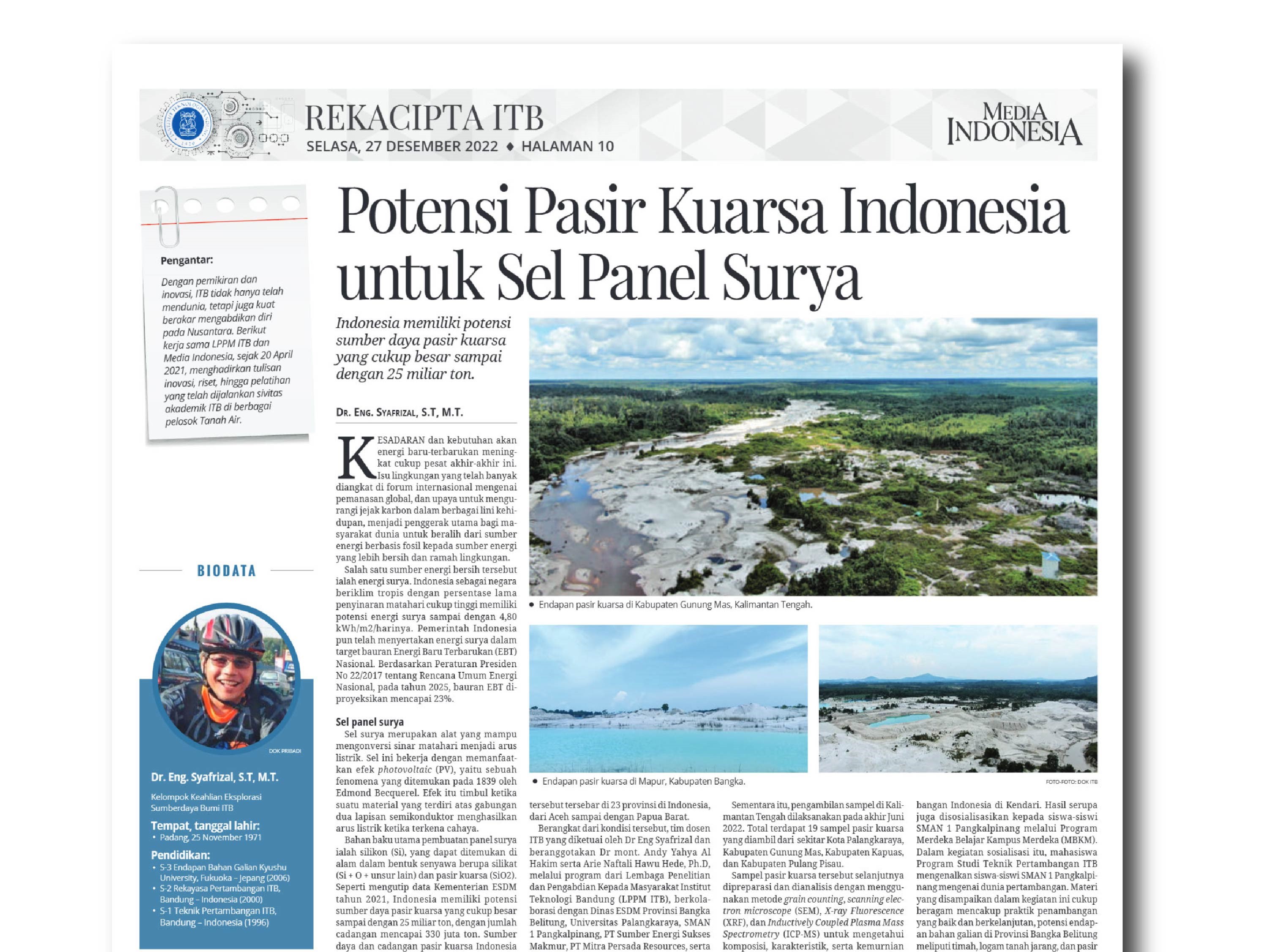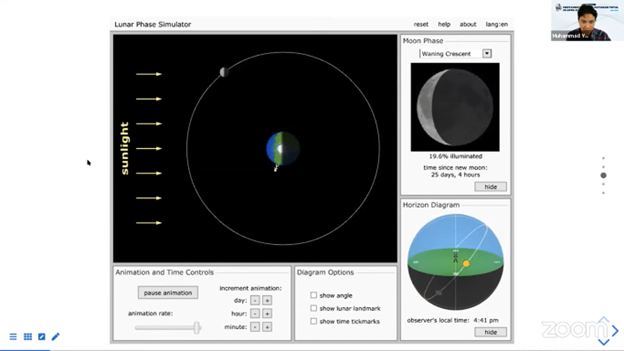The Potential of Indonesia's Quartz Deposits for Solar Cell Production to Achieve Zero Net Emission
By Adi Permana
Editor Adi Permana

BANDUNG, itb.ac.id—Solar cell is a device that converts sunlight into electricity. With its tropical climate and large reserves of quartz, Indonesia's target of realizing zero net emissions by 2060 is increasingly achievable, as stated by President Joko Widodo.
A team of ITB lecturers led by Dr. Eng. Syafrizal, with members Dr. mont. Andy Yahya Al Hakim and Arie Naftali Hawu Hede, Ph.D., conducted a community-service activity themed "Characterization of Quartz Deposits and Their Utilization as Raw Materials for Solar Cells." This community service was organized through a program from LPPM ITB (Institute for Research and Community Service of ITB).
In this activity, the team collaborated with the ESDM Office of Bangka Belitung Province, Palangkaraya University, SMAN 1 Pangkalpinang, Sumber Energi Sukses Makmur Inc., Mitra Persada Resources Inc., and Timah Plc.
The activity began with quartz sampling across the Bangka Belitung and Central Kalimantan Province. By the end of March 2022, seventeen quartz samples had been collected at several locations in Bangka Belitung. Meanwhile, another nineteen quartz samples were gathered from various points in Central Kalimantan at the end of June 2022.
These samples were then analyzed to determine their purity, composition, and characteristics. Some of the methods employed to perform this analysis were grain counting, scanning electron microscope (SEM), X-ray fluorescence (XRF), and inductively coupled plasma mass spectrometry (ICP-MS).
It was obtained through grain counting that the minerals contained in the samples include quartz, cassiterite, limonite, hematite, magnetite, biotite, and feldspar. The sample content for each location is described as follows.
In the Bangka region, the quartz samples contained 69.8–95.6% silicon dioxide; 11,000–18,000 ppm iron oxide; 130–420 ppm titanium oxide; and 2,650–17,210 ppm aluminium oxide. In Central Kalimantan, the quartz samples contained 97.9–99.1% silicon dioxide; 6,000–8,000 ppm iron oxide; 168–3,600 ppm titanium oxide; and 900–3,200 ppm aluminium oxide.
Based on the analysis, the quartz obtained from Bangka and Central Kalimantan contained considerable amounts of silicon oxide. However, it also had high levels of impurities that exceeded the limits imposed on current solar cell manufacturing. Therefore, further processing and purification were required to use said quartz.
The results of this research were then presented at the Annual Meeting Forum of the Indonesian Mining Experts Association in Kendari. In addition, the results were also socialized to students of SMAN 1 Pangkalpinang through the MBKM (Merdeka Belajar Kampus Merdeka) Program.
It was expected that the research would be expanded in the future to develop the processing and purification of Indonesia's quartz so that it can be fully utilized in the solar panel industry.

This community-service activity was published by Media Indonesia under the rubric of Rekacipta ITB on 27 December 2022. The full article can be seen on Lembaga Penelitian dan Pengabdian kepada Masyarakat
Reporter: Amalia Wahyu Utami (Engineering Physics '20)
Translator: Ariq Ramadhan Teruna (Chemical Engineering '21)

.jpg)
.jpg)
.jpg)
.jpg)
.png)



